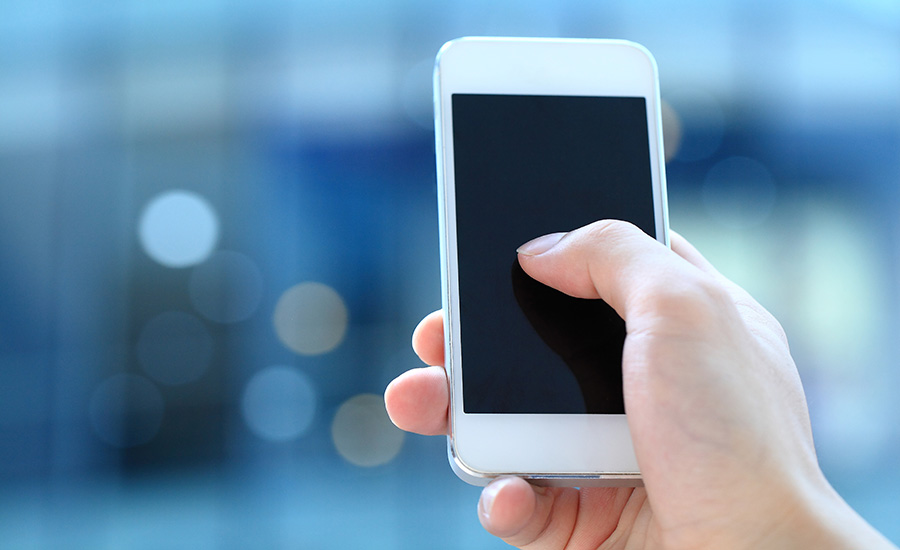Smartphone Bans are Taking a Toll on the Federal Workforce

As if changing missions, resource shortages and salary pressures weren’t big-enough challenges, many federal workers must deal with another hurdle that’s been largely overlooked: smartphone bans. Designed to keep remotely hijacked cameras and microphones outside of secure spaces and other work areas, smartphone bans leave many employees feeling hamstrung in their ability to do their jobs and isolated from colleagues, friends and family. As a result, productivity, morale and recruiting suffer, ultimately putting an agency’s mission effectiveness in jeopardy.
The side effects of these bans can be detrimental, but luckily, there are different avenues that federal agencies can take to empower their personnel to succeed.
The Birth of Smartphone Bans
The Snowden leaks revealed that as early as 2008, the National Security Agency (NSA) had planned a remote installation exploit for the iPhone that would activate the device’s cameras and microphones. It’s a safe bet that in 2019, the NSA and every intelligence agency on the planet have sophisticated smartphone surveillance tools at their disposal. Other than the occasional glimpse – like the claim tying the Dark Caracal spyware campaign to Lebanese intelligence – the public rarely gets a look at this world. The closest we get is watching modern spy thrillers on Netflix like Pine Gap and Secret City.
Against this backdrop, practices and procedures designed to keep these potential surveillance devices out of reach of the government’s most closely held secrets make sense. For years, the Pentagon has required phones – even government-issued ones – be left in storage containers outside of secure spaces, which are offices and meeting rooms where sensitive information is handled and discussed. This practice was first codified in November 2017 for all agencies dealing with classified information through a directive issued by the Committee on National Security Systems (CNSS), an interagency committee led by the Department of Defense (DoD), and again in May 2018 through a mobile device ban published by the Deputy Secretary of Defense.
The New Cigarette Break
At federal buildings like the Pentagon, workers either keep their mobile devices in their cars or surrender them in lock boxes, cubbies or cabinets outside of their workplaces. The smartphone break has replaced the cigarette break, with employees huddling in common areas like doorways and courtyards to get their digital fix. Whether that’s keeping tabs on a sick family member or scrolling through social media as a way of relieving stress, federal employees are as attached to their smartphones as the rest of humanity.
Back in the office, workers have to rely on their computers, landline phones and pen and paper to get their tasks accomplished. During meetings and while away from their desks, personnel miss out on a host of opportunities to work more efficiently – things like responding to an urgent email during a non-relevant portion of a presentation, shooting a quick text to a colleague to get their thoughts on a project, finding a document or coordinating future meeting schedules with other participants.
All of this adds up to a lot of wasted time. It’s no surprise that the average government worker loses 52 minutes of productivity time per day – and 28 percent in overall productivity – without a smartphone at work, according to a 2016 Frost & Sullivan survey. Do the math for every federal employee under a ban and you’re looking at staggering annual productivity losses.
It’s Personal, Not Just Professional
Perhaps the biggest downside to a smartphone ban from the worker’s perspective is the lack of contact with the people closest to them. Anybody who’s been on a plane without Wi-Fi or otherwise out of pocket for hours at a time knows the feeling of playing catch-up with their own life. And ten-minute bursts of smartphone use can only go so far when there’s a family emergency or other time-sensitive situation. In fact, the typical government worker loses 50 minutes of personal time each day just from not having a smartphone at work. And this has a huge effect on morale – a 2016 Economist Intelligence Unit survey shows a huge gap in employee satisfaction (23 percent ) between organizations who put mobile first and those who don’t.
Morale, of course, has a strong correlation with productivity. Contented employees tend to work harder and better, resulting in decreased absenteeism, fewer mistakes and a more positive work environment. In fact, highly engaged workers are a whopping 22 percent more productive than their less-engaged peers.
In an era marked by instability throughout the federal government – compounded by changing missions, budget cuts, unfilled vacancies in key positions, hiring freezes, labor-management battles, furloughs and government shutdowns – agencies are already fighting an uphill battle when it comes to morale. According to a 2018 Partnership for Public Service survey, the federal employee engagement score dropped slightly between 2017 and 2018. Compare the government engagement score of 62.2 percent to the private-sector score of 77.1 percent and it’s obvious that the federal government needs to do everything in its power to make morale a priority.
Not Getting Any Younger
You might be thinking, “What young person would want to work without a smartphone?” And you’d be right. These digital natives came of age with eyes glued to their smartphones, relying on these devices for communication, entertainment and personal efficiency. The numbers don’t lie: four out of ten millennials refuse to work for an organization that doesn’t allow personal devices in the workplace.
And that’s a big problem. The percentage of the federal workforce that’s eligible to retire is 14 percent, according to 2018 data provided the Office of Personnel Management (OPM), and that number is expected to balloon to 30 percent by 2023. As baby boomers leave the federal government in droves, millennials will be needed to replenish the talent pipeline. And yet, the percentage of full-time federal employees under age 30 has been in decline since 2011. At the end of fiscal year 2017, this cohort made up just 6 percent of the federal workforce (compared to 21 percent of the private-sector workforce).
As with morale, the deck is stacked against federal recruiting, particularly for those younger workers with the technical skills that federal agencies will need to innovate and deliver on their missions in the coming decades. In addition to realistic mobile policies, the private sector offers better pay, cooler perks, faster innovation and painless hiring processes. Removing just one of these barriers would make life easier for hiring managers.
Emerging Options
For security reasons, federal agencies dealing with classified information don’t trust software-based solutions to lock down their commercial off-the-shelf (COTS) smartphones. There are simply too many soft spots in the smartphone ecosystem, from bugs in the underlying operating system (OS) to security gaps in the supply chain to chip-level vulnerabilities. It’s virtually impossible to keep out sophisticated malware (like the kind developed by foreign intelligence services) with any degree of assurance, inviting the remote activation of cameras and microphones by threat actors.
Luckily, solutions centered around high-security, external mobile hardware are emerging that provide secure smartphone protections in isolation from the vulnerable device. It’s now possible to physically block a smartphone’s cameras and mask its surrounding audio while enforcing adherence to agency policies. In the future, solutions like these may become approved exceptions to federal policies banning smartphones. Through these solutions and more, the federal government will be able to unleash federal workers and give them the tools they need to best do their jobs. Only through bold thinking and fresh ideas will federal agencies be able to turn the tides on productivity, morale and recruiting.
Looking for a reprint of this article?
From high-res PDFs to custom plaques, order your copy today!






